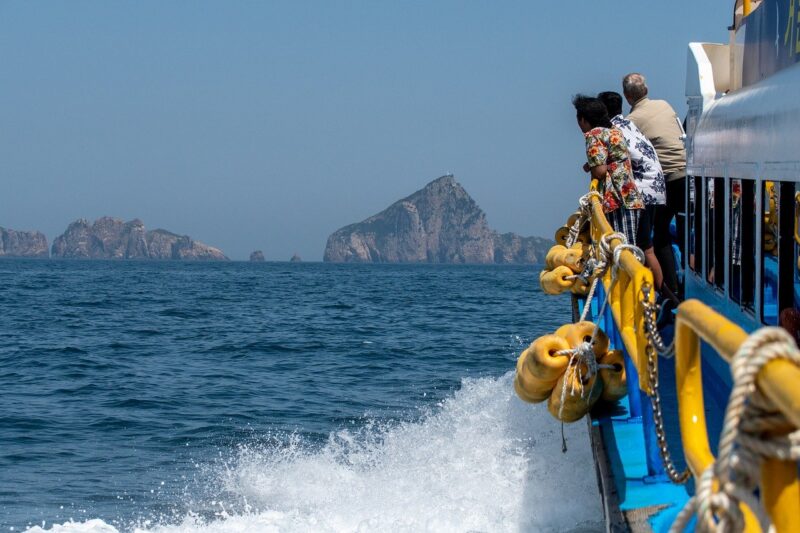The History of Ferry Transport and How It Connects Remote Communities
November 12, 2024

Ferry transport has been an essential method of travel and trade since ancient times, linking remote communities across bodies of water. From the simple paddle-powered boats of the early civilizations to modern, large-capacity ferries, this mode of transportation has evolved significantly to meet the needs of growing populations. In this article, we will explore the rich history of ferry transport, its development, and its crucial role in connecting remote communities.
1. Ancient Beginnings of Ferry Transport
Ferry transport dates back to ancient times when people needed to cross rivers and lakes for trade, migration, and communication. Archaeological evidence suggests that civilizations such as the Egyptians, Greeks, and Romans utilized boats to facilitate travel and commerce. The Nile River in Egypt, for example, served as a vital transport route, with ferry services connecting villages on either side, promoting trade and interaction.
As maritime technology advanced, civilizations began constructing more sophisticated vessels. The introduction of sails significantly increased the speed and capacity of ferry boats. This innovation allowed for greater distances to be covered and paved the way for the commercial ferry services we see today.
2. Medieval and Renaissance Era Developments
During the medieval period, ferry transport underwent significant advancements. As Europe’s population grew, so did the demand for efficient transport links. Local ferries became crucial for trade, especially in regions with numerous rivers and coastal areas.
Ferry services evolved into established businesses, with specific routes and schedules. Wooden rowboats transitioned to larger vessels capable of transporting goods and passengers. This era also saw the rise of specialized ferry services, like those transporting livestock and agricultural products, essential for local economies.
The Renaissance brought about intriguing innovations in navigation and shipbuilding. Ferries began adopting better hull designs and improved sailing techniques, which allowed for quicker and safer journeys. The expansion of trade routes during this period further emphasized the importance of established ferry services in providing accessibility to remote communities.
3. The Industrial Revolution and Modernization
The Industrial Revolution marked a pivotal point in the history of ferry transport. The introduction of steam power in the early 19th century revolutionized the ferry industry, allowing boats to carry larger numbers of passengers and goods more efficiently. Steam-powered ferries offered faster crossings and improved reliability, making ferry transport a preferred choice in many regions.
Countries like the United States and the United Kingdom invested significantly in their ferry infrastructure. New routes were established to connect growing urban centers with surrounding regions, enhancing commerce and tourism. Some of the most famous ferry services in history, like the Staten Island Ferry in New York and the Thames Clippers in London, were established during this period.
By the end of the 19th century, ferry transport had firmly established itself as a vital component of urban and rural connectivity. Complex ferry networks began emerging, providing essential links for communities separated by waterways.
4. The Role of Ferries in Contemporary Society
Today, ferry transport remains a crucial service, particularly for communities that rely on waterways as a primary means of transportation. Ferries serve various purposes, including commuting, tourism, and transporting vehicles and goods.
Ferries play an essential role in connecting remote communities, ensuring that residents have access to essential services like healthcare, education, and employment. In regions where building bridges may not be feasible due to environmental concerns or geographic challenges, ferries provide a critical alternative.
Modern ferry services leverage advanced technology for improved safety and efficiency. High-speed ferries, hybrid-powered vessels, and digital ticketing have transformed the passenger experience. Furthermore, ferries contribute to sustainable transport solutions by reducing road traffic and carbon emissions, promoting greener travel options.
5. Case Study: The Importance of Ferries in Scandinavia
Scandinavia is a region where ferry transport plays an integral role in both daily life and tourism. Countries like Norway and Sweden have extensive ferry networks that connect numerous islands and coastal communities. These ferries not only facilitate commuting but also preserve cultural ties and support local traditions.
In Norway, ferries counter the geographical barriers posed by fjords and islands. They provide vital links between urban areas and remote communities, allowing residents to access jobs and amenities in cities. This interconnectedness is essential for social cohesion and economic sustainability.
Moreover, tourism is significantly boosted by ferry services in Scandinavia. Routes that showcase scenic landscapes draw millions of visitors each year, further bolstering local economies reliant on tourism.
6. Challenges Facing Ferry Transport Today
Despite their undeniable benefits, ferry services today face numerous challenges. Increasing operational costs, fluctuating fuel prices, and environmental regulations pose significant hurdles. Additionally, the global pandemic highlighted vulnerabilities, with many services struggling to maintain ridership and financial viability.
To adapt, ferry operators are exploring innovative solutions, including increased automation, smarter scheduling, and enhanced customer experience through technology. Transitioning to low-emission vessels is also on the rise, aligning with global sustainability goals.
7. Conclusion: The Enduring Impact of Ferry Transport
Ferry transport boasts a rich and storied history that reflects humanity’s adaptability and resilience. As we look to the future, the ongoing evolution of ferry services will continue to play a pivotal role in connecting our societies, preserving local cultures, and facilitating trade and tourism.
In bridging geographical divides, ferries will remain indispensable in ensuring that remote communities are not left behind, fostering social connections, economic growth, and sustainable transport practices.
Ferry transport has come a long way since its ancient beginnings, and as we continue to innovate and adapt, the future of this essential service looks promising and vital for connecting communities across the world.






